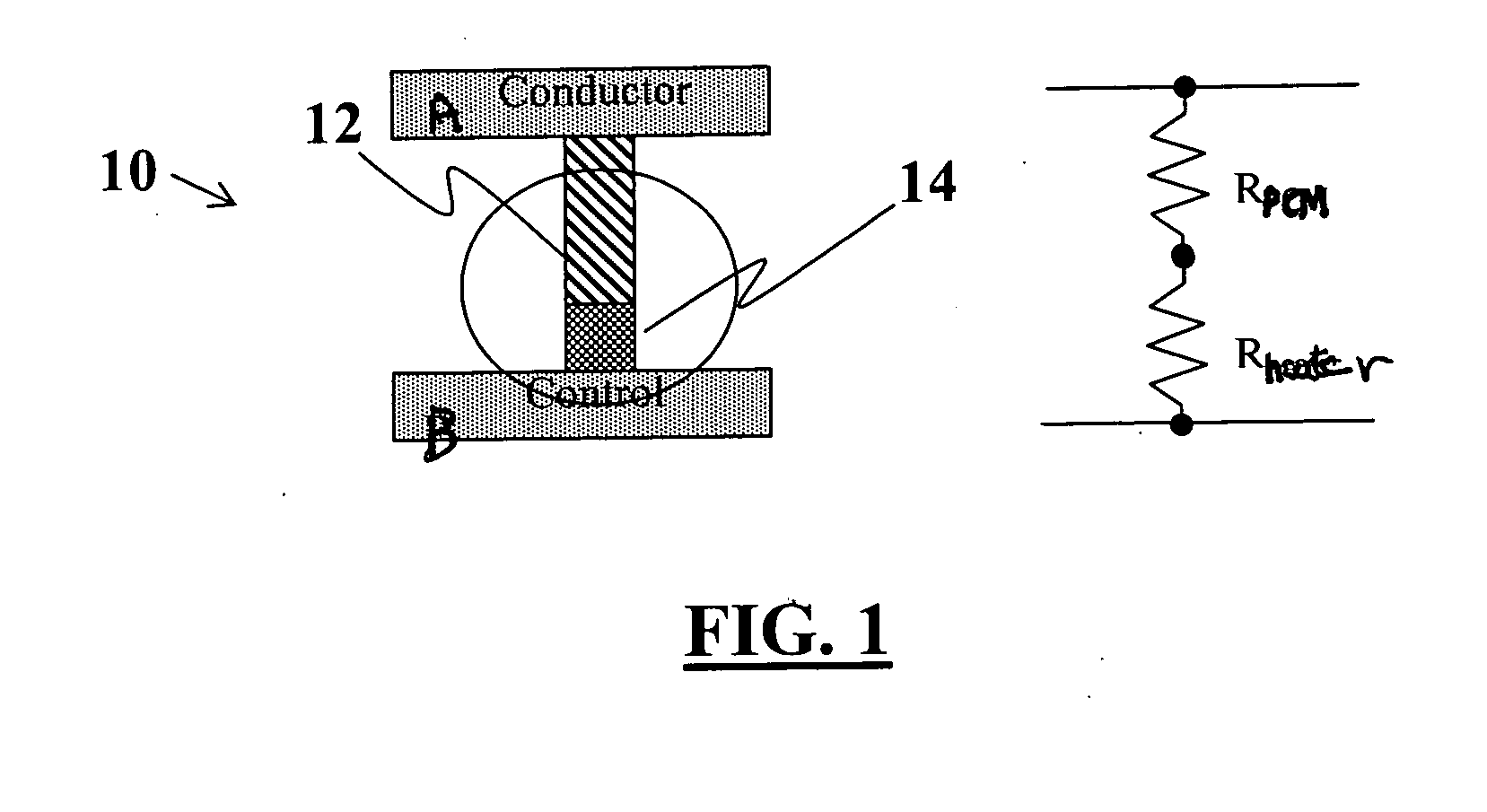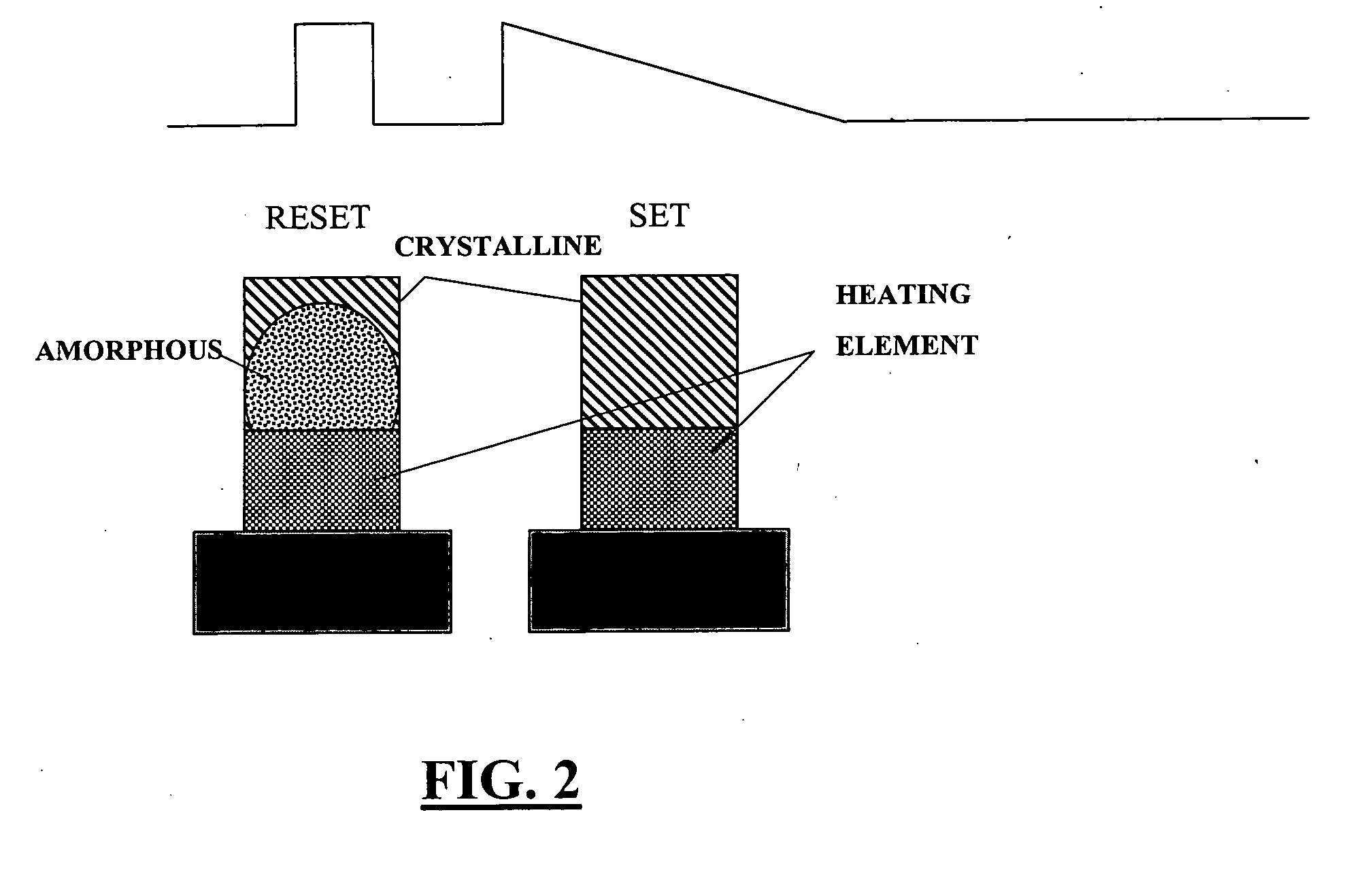Methods for fabricating multi-terminal phase change devices
a phase change device and multi-terminal technology, applied in semiconductor/solid-state device manufacturing, basic electric elements, electric devices, etc., can solve the problems of device electrical characteristics that affect the electrical characteristics of the device, device electrical characteristics that are disputed, etc., to achieve the effect of not increasing the resistance across the two conducting elements of the switch, increasing the resistance of the heater element, and manifolds
- Summary
- Abstract
- Description
- Claims
- Application Information
AI Technical Summary
Benefits of technology
Problems solved by technology
Method used
Image
Examples
Embodiment Construction
[0043]FIG. 4A shows an example of a three-terminal PCD (phase change device) 400 in accordance with the invention. PCD 400 includes a pair of active electrically conductive terminals, 404, 406, bridged together by phase change material (PCM) 402. Terminals 404 and 406 connect PCD 400 to other circuit devices (not shown) whose exact nature depends on the particular application.
[0044] PCM 402 is in thermal and electrical contact with a heating element 408, which is part of a control terminal 410 through which current is applied to the heating element to activate same. When activated in a controlled manner as explained further below, heating element 408 induces a phase change in PCM 402. Two important phases are a high resistance amorphous phase, which causes the PCM 402 to be effectively high resistance, thereby establishing a virtual open circuit condition between active terminals 404 and 406, and a low resistance polycrystalline phase, which electrically connects the active termina...
PUM
 Login to View More
Login to View More Abstract
Description
Claims
Application Information
 Login to View More
Login to View More - R&D
- Intellectual Property
- Life Sciences
- Materials
- Tech Scout
- Unparalleled Data Quality
- Higher Quality Content
- 60% Fewer Hallucinations
Browse by: Latest US Patents, China's latest patents, Technical Efficacy Thesaurus, Application Domain, Technology Topic, Popular Technical Reports.
© 2025 PatSnap. All rights reserved.Legal|Privacy policy|Modern Slavery Act Transparency Statement|Sitemap|About US| Contact US: help@patsnap.com



